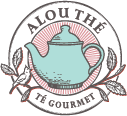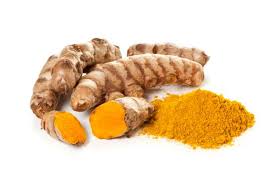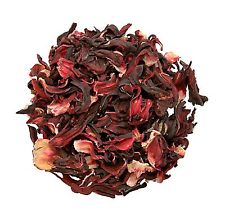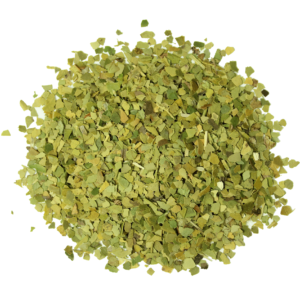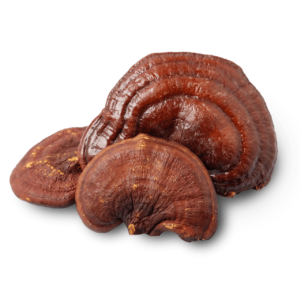The ancient drink called tea, which comes from the Camellia Sinensis tree, which is credited with more than 2,000 beneficial properties for the body, helps prevent and help with illnesses and ailments. It has been on the list of fifty basic plants of traditional Chinese medicine for more than 3,000 years. It was taken in China after meals, to improve digestion, used in ointments and skin creams. There is archaeological evidence dating back to 200 BC in which references are made to its various medicinal properties.
Tea properties are directly related to the chemical composition of its leaf. Chemicals in tea differ by type. Depending on how the leaves are processed will determine the final classification of the tea. More processed types of tea, such as black tea, differ significantly from the less processed, such as green tea. This is due to oxidation suffered by the leaves in the processing period. Green tea undergoes a minimal process, where the active ingredients contained in buds remain almost intact before being harvested. Therefore, a tea that has undergone minimal processing, such as white or green tea, will always contain a higher concentration of main leaf components than a tea which has undergone greater processing.
Fresh leaves of the Camellia Sinensis tree, just harvested, have a high percentage of water, vitamins, minerals and antioxidants. Leaves are made up of water, an insoluble product (starch, chlorophyll, resin, etc.) and a soluble product that is transferred to tea liquor once the infusion has been made. Thanks to multiple health benefits, more and more people are incorporating this drink into their daily diet.
Here are the main components of tea and benefits associated with each component:
|
Catechins |
Antioxidant, antimutagenic, reduces blood cholesterol levels, regulates blood sugar levels, reduces body fat. |
| Vitamin C | Antioxidant, antimutagenic, prevents colds, improves skin appearance, anti cataract agent. |
| Vitamin B2 | Antioxidant. |
| Vitamin E | Antioxidant, antimutagenic, antidiabetic agent, anti-cataract agent, anti-aging. |
| γ-aminobutyric acid (GABA) | Reduces blood pressure. |
| Flavonoids | Antioxidant, antimutagenic, strengthens blood vessel walls, prevents halitosis, cardiovascular diseases, delays aging, reduces the risk of cancer. |
| Polysaccharides | Anti-diabetic agent. |
| Tannins | Healing, anti-diarrheal properties, reduces blood cholesterol levels. |
| Fluoride | Prevents teeth from falling. |
| Theanine | Reduces blood pressure, anti-stress, increases brain activity, improves mental focus and concentration. Regulates the nervous system and brain function. |
| Caffeine | Prevents drowsiness, diuretic, stimulates metabolism. It has thermogenic properties. |
Different types of tea come from the same tree, differentiated by the elaboration procedure of each one. They are less processed than others, because each type of tea has a specific or more marked property. For example, the white one is considered the most exquisite and refined, due to its minimum processing, and instead of harvesting entire leaves, only the most tender and young buds are chosen. According to several scientific studies, it has been shown to contain three times the amount of polyphenols than green tea.
For example, Pu Erh is known for its slimming effects. This tea goes through a unique fermenting process, very different from others. Fermentation is a biological process, where life is involved such as microorganisms, in this case bacteria. Japanese scientists came to the conclusion that the qualities of Pu Erh are due to microorganisms taking part in its long fermentation process.
As previously mentioned, every tea has a specific or more marked property than other. Currently, green tea is the focus of multiple investigations and scientific research in order to discover its properties, ironically not approved by the US Food and Drug Administration (FDA).
Next, we have summarized the results of some investigations we found on the benefits of tea:
-University of Hong Kong (China)- showed that antioxidants contained in green tea (vitamin C, vitamin E, lutein and zeaxanthin) can be absorbed by different eye tissues, including those that prevent glaucoma and other eye diseases. It has also been scientifically proven to reduce tooth and gum disease.
-University of Hong Kong Pharmacological Institute (China)- conducted intensive research on the effects of Pu Erh on cholesterol levels, resulting in a clear reduction in cholesterol values, even in patients with a high-calorie diet and fats.
-Kunming Institute of Medicine (China) and Saint Antoine Hospital (France) – main scientific representatives of both institutions have corroborated a reduction of level of fats in the blood, as a property of Pu Erh.
-Phytomedicine Scientific Journal (Germany) – suggests that tea could play an important role in reducing the probability of suffering from cancer and attenuating its progression.
-University of Newcastle (England) – Research shows that regularly drinking green tea could reduce the risk of degenerative diseases such as Alzheimer’s and other forms of dementia due to the antioxidant properties of polyphenols present in Camellia Sinensis tree.
-European Journal of Clinical Nutrition (England) – has confirmed that tea contains high levels of antioxidants which allow greater cell regeneration. In addition, drinking between four and five cups of tea a day prevents heart attacks, while strengthening bones, and could even reduce the chance of getting cancer.
-Medical School of Athens (Greece) – indicates that 30 minutes after consuming a cup of tea the body’s arteries dilate, which prevents circulatory problems, arteriosclerosis, etc.
Oregon State University (USA) – According to studies, white tea is a natural way to try to fight cancer. It has numerous anti-carcinogenic properties, even more powerful than those of green tea.
Arteriosclerosis, Thrombosis, and Vascular Biology Journal, Journal of the American Heart Association (USA) – indicates that daily consumption of 3 to 6 cups decreases the risk of death from cardiovascular diseases.
Agricultural and Food Chemistry Journal (USA) – indicates that one of its components, epigallocatechin (EGC), promotes the growth of bone cells (up to 79%), which strengthens bones, increases mineralization and helps to prevent osteoporosis.
Moreover, regular consumption of tea prevents gallbladder inflammation.
Biological Psychiatry Magazine (USA) – indicates that in the brain, tea polyphenols have a protective effect on dopamine protective cells, thus preventing Parkinson’s disease.
Obesity Magazine (USA) – indicates that one of the main components of tea, catechin, is a flavonoid that helps fight fat.
Penn State University (USA) – studies indicate that the compound epigallocatechin-3-gallate (EGCG) serves as a tool to combat obesity. Research suggests that the compound, in addition to reducing fat absorption, may also improve the body’s ability to use it.
American Journal of Epidemiology of the University of Tohoku in Senda (USA) – finds that drinking at least five cups of green tea a day reduced the risks of cancer of the blood by 42% and of the lymphatic system by 48%. These huge reductions in cancer will be the same in men and women and people with different body mass indices.
SOME PROPERTIES ASSOCIATED WITH OUR TEA BLEND INGREDIENTS
- Anticancer.
- Antidiabetic.
- Helps control dyslipidemia (pathological conditions).
- Helps control obesity.
- Helps blood pressure.
- Helps regulate menstruation.
Star anise:
- Pain reliever.
- Antispasmodics.
- Anti-rheumatic.
- Helps lower sugar levels.
- Helps reduce intestinal colic pain.
- Helps increase appetite.
- Carminative (reduces gases, flatulence, and colic).
- Digestive.
- Diuretic.
- Digestive system ailments: heavy digestions, indigestion, diarrhea, intestinal fermentation.
- Emmenagogue (stimulates menstruation).
- Eupeptic.
- Expectorant.
- Facilitates breathing.
- Galactagogue (stimulates the secretion of breast milk).
- Tonic.
- Aphrodisiac.
- Constipation relief.
- High magnesium content.
- Antioxidant.
- It helps you lose weight.
- Anandamide content (neurotransmitter).
- Digestive.
- Energetic.
- Stimulating.
- Pleasant feeling of well-being.
- Regulates blood sugar.
- Mood regulator (increases the production of endorphins).
Marigold:
- Effective relief against acne and dermatitis.
- High content of Antioxidants.
- Anti ulcerative.
- Antibacterial.
- Antidepressant
- Anti-inflammatory.
- Calms minor skin burns.
- Healing.
- Fights muscle spasms.
- Fights vomiting and gastritis.
- Digestive.
- Effective for oral hygiene.
- Fungicide.
- Antiseptic properties.
- Reduces fever.
- Regulates menstrual cycle and prevents pain.
- Effective treatment for hemorrhoids and varicose veins.
- Effective relief against acne and dermatitis.
Cinnamon:
- Helps fat metabolism.
- Aphrodisiac.
- Analgesic.
- Anticoagulant.
- General anti-inflammatory.
- Antioxidant.
- Astringent.
- Increases peripheral circulation.
- Increases fertility.
- Increases cognitive function and memory.
- Carminative.
- Diaphoretic.
- Digestive.
- Diuretic.
- Effective for the treatment of rheumatism, arthritis and osteoarthritis.
- Thermogenic effect (promotes fat burning).
- Expectorant.
- Prevents bad breath.
- Regulates blood sugar levels, as well as cholesterol and triglycerides.
Cardamom:
- Speeds up metabolism.
- Aphrodisiac.
- Relieves hemorrhoids.
- Antispasmodic.
- Antiseptic.
- It helps calm a fetus and promotes a happy and natural pregnancy.
- Helps clear the mind of problems.
- Helps people with nausea, belching and vomiting.
- Carminative.
- Detoxifying
- Digestive.
- Effective against arthritis.
- Appetite stimulant.
- Stimulates blood circulation.
- Stimulating.
- Strengthens the heart.
- Prevents halitosis.
- Sialagogue (which produces saliva).
Orange peel:
- Antiemetic (prevents vomiting and nausea).
- Antioxidant.
- Antitussive.
- Helps fight infections.
- Carminative.
- Digestive.
- Stimulating.
- Stomatic.
- Expectorant.
- Favors fat loss.
- Refreshing.
- Its oils helps dissolve cholesterol and triglycerides.
Clove:
- Aphrodisiac.
- Relieves headaches.
- Analgesic.
- Anesthetic.
- Antibacterial.
- Anticoagulant.
- Antispasmodic.
- Anti-inflammatory.
- Helps cure serious infections such as cholera, tuberculosis, intestinal parasites and malaria.
- Fight heartburn.
- Fight insomnia.
- Combat intestinal problems such as diarrhea, vomiting or gas.
- Fight halitosis.
- Cut diarrhea.
- Decongestant
- Eliminates vaginal infections such as candida albicans.
- Eliminates intestinal parasites.
- It is a natural mosquito repellent.
- Stimulates circulation.
- Stimulating.
- Promotes good digestion and prevents bloating.
- Reduces athlete’s foot and foot fungus.
- Reduces blood sugar levels.
- Relieves rheumatoid arthritis.
- Analgesic.
- Anticancer.
- Anticoagulant.
- Antidepressant
- Anti-inflammatory.
- Antimicrobial.
- Antioxidant.
- Antiseptic.
- Increases defenses.
- Helps weight loss.
- Purifies the blood and blood vessels.
- Diuretic.
- Stimulates liver detoxification.
- Improves circulation.
- Prevents gallstones and kidney stones.
- Prevents Alzheimer’s.
- Promotes healthy digestive system.
- Promotes menstruation.
- Protect the heart.
- Lowers blood sugar.
- Natural remedies for respiratory problems.
Soursop (leaves):
- Anticancer. It prevents and controls the disease when in its active state in just 48 hours of taking it.
- Antidiabetic.
- Antidiarrheal.
- Antispasmodic.
- Anti-malarial.
- Antirheumatic.
- Antitumor.
- Fight liver disorders.
- Fight asthma.
- Digestive.
- Diuretic.
- Prevents the accumulation of fat in the body.
- Insecticide
- Pectoral.
- Sedative (helps calm nerves as well as good sleep).
- Vasodilator.
Hibiscus:
- Aphrodisiac.
- Antibacterial.
- Anticancer.
- Antimicrobial.
- Antioxidant.
- Helps lose weight and removes toxins or chemical waste from the body.
- Lowers harmful cholesterol and regulates triglycerides.
- Contains citric acid, tantaric acid, vitamins and mineral salts.
- It decongests the intestines, cleanses them of parasites and microbes.
- Digestive.
- Stimulating.
- Improves blood circulation.
- Reduces hypertension.
Ginger:
- Aphrodisiac.
- Antidepressant
- Anti-inflammatory.
- Antioxidant.
- Antiseptic.
- Helps fight respiratory diseases, osteoarthritis.
- Helps counteract the hot flashes of menopause.
- Carminative.
- Fight stress.
- Digestive.
- Reduces migraines by blocking the effects of prostaglandin.
- Reduces rheumatic and menstrual pain.
- Effective against menstrual pain.
- Eliminates dizziness and vertigo.
- Expectorant
- Fights against cellular aging.
- It improves blood flow, thus preventing cardiovascular diseases.
- Improves circulation.
- Prevents colon and ovarian cancer.
- Rich in essential oils, vitamins, minerals, antioxidants and amino acids.
Lemongrass:
- Anticancer.
- Anti-stress
- Anti-inflammatory.
- Antimutagenic.
- Antioxidant.
- Antiseptic.
- Helps gastritis.
- Helps with hypertension and cardiovascular disorders.
- Helps regulate cholesterol.
- Helps the respiratory system.
- Carminative.
- Digestive.
- Diuretic.
- Circulatory tonic.
Chamomile:
- Antidepressant.
- Anti-inflammatory.
- Antiseptic.
- Helps control high cholesterol levels.
- Helps eliminate toxins from the body.
- Helps sinusitis.
- Helps gastric ulcers, gastritis, diverticula, and colic.
- Helps in case of food poisoning.
- Digestive.
- Diuretic.
- Emmenagogue (relieves menstrual pain).
- Protective and repairing of the gastric membrane.
- Protects the liver.
- Muscle relaxant.
- Sedative.
- sleeping pill
- Rich in essential minerals.
- Provides vitamins B1 and B2, vitamin C and vitamin E.
- It is antioxidant, energetic and revitalizing.
- Increases libido and improves fertility (in men and women).
- Increases the number and movement of sperm.
- Reduces premenstrual symptoms and menstrual pain.
- Stimulates the formation of red blood cells.
- Helps in cases of anemia.
- Regulates cholesterol and helps in diabetes, increasing the activity of the pancreas.
- It has anti-stress and antidepressant properties.
- Reduces osteoporosis.
- Increases learning capacity and memory.
- Reduces symptoms of fatigue.
- Antidepressant
- Increases calorie burning.
- Helps respiratory diseases.
- Digestive.
- Energizing.
- Stimulating.
- Improves concentration.
- Reduces appetite.
- Reduce the cholesterol.
Peppermint:
- Analgesic.
- Anticoagulants.
- Antispasmodics.
- Anti-inflammatory.
- antioxidant.
- Antiseptics.
- Astringents.
- Carminative.
- Fight halitosis.
- Contributes to blood flow.
- Diaphoretic.
- Digestive.
- Decreases anxiety.
- Febrifuges (helps eliminate fever).
- Strengthens the heart.
- Source of potassium, calcium, folic acid and vitamin A.
- Relaxing.
- It acts in the digestion of fats.
- Antibacterial.
- Anticancer.
- Anti-inflammatory.
- Antioxidant.
- Antitussive (dry cough).
- Increases blood circulation.
- Helps pigmentation (vitiligo).
- It helps convey different benefits of other herbs to different parts of the body.
- Cardiotonic
- It stimulates the immune system.
- Increases caloric expenditure by increasing basal metabolism.
- Prodrugs (increase the bioavailability of a number of therapeutic drugs by improving their absorption).
- Regulates blood sugar.
Pink pepper:
- Cold and flu fighting agent.
- Antibacterial.
- Anticancer.
- Antispasmodics.
- Anti-fungal.
- Anti-inflammatory.
- Anti-irritants.
- Helps with weight loss.
- Help against allergies.
- Detoxifying
- Digestive.
- Diuretic.
- Improves heart health.
- Prevention against migraine and headaches
- Antiplatelet agent
- muscle relaxant
- anti-inflammatory
- Natural antioxidant (one of the most powerful)
- antiaging
- promotes balance
- Protection from cell damage
- Promotes blood circulation
- To treat insomnia, stress and anxiety
- Help in cases of cognitive diseases
- antihistamine activity
- Regulates metabolism
- Fight fatigue
- Regulates the digestive system
- antihypertension
- Hypocholesterolemic
- Protects the liver
Rooibos:
- Anticancer.
- Helps irritated skin and skin problems.
- Helps lose weight.
- Calms allergies (antihistamine).
- Control diabetes.
- Balances the nervous system.
- Avoid liquid retention.
- Promotes heart health.
- Strengthens teeth and bones. It contains a high content of magnesium, fluoride and calcium, three substances that are essential for teeth.
- Improves digestive and intestinal disorders.
- Prevents fatty liver.
- Prevents hypertension.
- Reduce stress.
- Remineralizes. Contains iron, potassium, calcium, zinc and magnesium.
- Delays aging. Its high in flavonoid, quercetin, vitamin C and other antioxidants.
Rose (petals):
- Antidepressant
- Antioxidant.
- Helps lose weight.
- Helps cleanse the liver and gallbladder.
- Helps strengthen the immune system.
- Depurative.
- Detoxifying.
- Digestive.
- Helps with sleep.
- Soothing.
